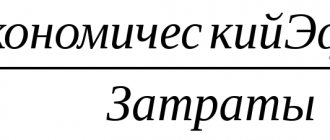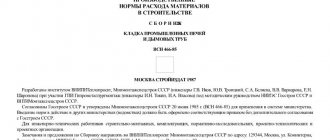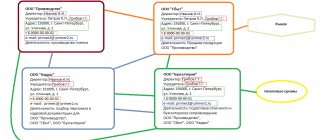Financial risk of the enterprise. Definition and economic meaning
The financial risk of an enterprise is the probability of an unfavorable outcome in which the enterprise loses or receives less than part of its income/capital. Currently, the economic essence of any enterprise is to create income and increase its market value for shareholders/investors. Financial risks are basic in influencing the results of the financial and economic activities of an enterprise.
And in order for an enterprise to reduce the negative impact of financial risks, methods for assessing and managing its size are being developed. The basic premise put forward by Norton and Kaplan that underlies risk management is that only what can be quantified can be managed. If we cannot measure or quantify any economic process, we will not be able to manage it.
| ★ InvestRatio program - calculation of all investment ratios in Excel in 5 minutes (calculation of Sharpe, Sortino, Treynor, Kalmar, Modiglanca beta, VaR ratios) + forecasting rate movements |
How to avoid risks or reduce their impact?
You can avoid risks in a small business by using control tracking measures.
Professional team of employees
- Take the time to find professionals in your business.
- Motivate employees through training.
- Conduct staff training in the company's areas of activity.
- Incentivize active employees with bonuses.
- Encourage creative and imaginative approaches.
Unfavorable industries and market capacity
Technological progress does not stand still. It is important to timely monitor the need for the products or goods that you offer.
- Study market trends, attend exhibitions in the direction of your business.
- Switch to new technologies. Use the latest materials to stay ahead of the competition.
- Conduct market research for your industry.
Expanding the product range and diversifying production
In order to reduce risks, it is important to constantly update the range of products offered. Diversification of a small business company’s activities is the simultaneous development of several areas. Product diversity will increase income and have a positive effect on survival in conditions of “tough competition.”
- Search for related products that can be sold along with the main one.
- Identification and termination of production of goods that are not in demand.
- Production of new in-demand products.
- Profitability analysis of product categories.
Similar article: Unified State Register of Legal Entities - what is it, how to get it and why do you need an extract?
Financial risk of an enterprise: types and classification
The process of any analysis and management consists of identifying and classifying existing risks of an investment project/enterprise/assets, etc. In the article we will place greater emphasis on assessing the financial risks of an enterprise, but many of the risks are also present in other economic entities. Therefore, the initial task for every risk manager is to formulate threats and risks. Let us consider the main types of financial risks that are identified in the practice of financial analysis.
| Types of financial risks | Description of types of risk |
| Credit Risk | Assessment of credit risk by calculating the probability of non-fulfillment of counterparties' obligations towards the lender to pay interest on the loan. Credit risk includes the creditworthiness and risk of bankruptcy of the enterprise/borrower |
| Operation Risk | Unforeseen company losses due to technical errors and failures, intentional and accidental personnel errors |
| Liquidity Risk | The solvency of an enterprise is the inability to pay in full to borrowers using cash and assets |
| Market Risk | The likelihood of a negative change in the market value of the enterprise’s assets as a result of the influence of various macro, meso and micro factors (interest rates of the Central Bank of the Russian Federation, exchange rates, cost, etc.) |
What are the ways to manage risks in an organization?
1. Credit risk management.
When carrying out transactions, organizations always decide in advance what size of losses they can accept, i.e. set a so-called loss limit. If, when concluding a particular transaction, this limit is exceeded, it is rejected. This is how the company regulates the level of risks when concluding transactions.
Assuming that the possibility of default from several borrower clients at the same time is unlikely, the number of losses from one buyer is taken as the main indicator. World practice has determined its maximum value - from 15 to 25% of the organization’s capital. The company itself determines this figure in accordance with its position in relation to risks. If there are a large number of buyers, the enterprise sets a lower limit for the transaction price, below which risk management is inappropriate.
After determining the maximum amount of credit risks for one client, it is important to assess the likelihood of failure to fulfill obligations by each of the borrowers. This is done by analyzing internal factors that influence the buyer’s credit ability: the amount of capital of the organization, its credit history, stability of cash flow, quality of management. Then the risk manager must classify the above factors by weight (assessment of the importance of indicators in %), by points (qualitative assessment) and draw up a summary rating table assigning a risk class (credit rating) to each client.
Using a simplified example of the consolidated table of the United Financial Group company, let us consider the three-level structure of factors that affect the buyer’s credit ability.
From the example you can see the division of all factors into external and internal. Factor group scores are the sum of the products of the factor score and its weight. For example, calculating the score of qualitative factors: 8 x 0.25 + 4 x 0.15 + 1 x 0.5 + 3 x 0.2 + 5 x 0.15 = 4.2, and the risk manager assigns a weight to them of 55 %.
By analogy, the scores and weight of quantitative, sectoral and country factors are determined.
Based on the sum of the assessments of all factors (internal and external), a final score is calculated, on the basis of which the risk class is established. Each organization develops its own scale of compliance with the final score of a certain risk class. In our example, if the final score is 10 - 12 units, the risk class will be 4, and if the final score is 12 - 14, it will correspond to risk class 5, and so on.
Taking into account each risk class, the value of the credit limit is determined, fluctuating between the highest permissible and 0.
Consequently, a certain risk class is in accordance with a certain limit size. A higher risk class is given a larger credit limit, since there is a low probability of default on the part of the client.
Credit risk management will not be effective if, in addition to setting credit limits, you do not regularly monitor the credit capacity of clients, adjust rating tables and periodically review the established limits of borrowers. It would be advisable to do this once a quarter or with the occurrence of any important event that could directly or indirectly affect the client’s credit capacity.
2. Market risk management.
When managing market risks, as well as credit risks, they use a system of limits, namely, when selling products, forming a foreign exchange or investment portfolio, the probability of maximum losses should not exceed the established limits.
When determining these limits, the maximum permissible one-time amount of losses that does not entail disruption of the normal operation of the organization is taken as a basis. The size of the probable loss on specific assets of the organization (finished products, foreign exchange or investment portfolios) exposed to market risks can be determined on the basis of “historical” analysis or using expert estimates.
The following limits may be set in market risk management:
- The amount of the transaction for the purchase or sale of products, when it is concluded on the basis that its result depends on fluctuations in the market price;
- On the size of foreign exchange assets, reducing the possibility of losses when the exchange rate of a currency changes;
- The amount of the total size of the organization’s own investment portfolio.
We will calculate the limit on the transaction amount for the sale of products. Based on the terms of the deal, the company agreed to supply goods to the consumer several months after signing the contract at pre-agreed prices.
The organization's own capital is $100 million; the maximum permissible one-time losses were approved at 20% of the amount of capital, which is $20 million. Taking into account the historical analysis data, the risk manager determined that for similar transactions the maximum amount of losses could be equal to 50% of the transaction amount.
Therefore, the transaction limit is: $100 million x 20%: 50% = $40 million.
That is, in the worst market scenario, the maximum loss from one transaction is 50%. This means that if our loss limit is $20 million, we can enter into transactions for an amount twice as large, i.e. for $40 million.
However, the organization’s top management always adjusts the final limit size, taking into account the company’s development strategy, the availability of free money and attitude to risks.
It is also important to regularly conduct so-called stress tests, when the consequences of the worst events are simulated. For example, they simulate a situation of a significant increase in the price of raw materials, analyze the consequences of this situation for the company, draw conclusions and develop the necessary strategy.
3. Liquidity risk management.
When managing liquidity risks, the planned cash flows of the enterprise are always analyzed first. When identifying risks discovered during the preparation of the cash flow budget, adjustments are made to the timing, amounts of income and expenses. Example: cash gaps were discovered in an organization. The risk manager can solve this problem by redistributing cash flows or planning to take out a short-term loan or credit.
4. Operational risk management.
Due to the inextricable connection between operational risks and the organization’s activities, their daily management often lies with the heads of structural divisions. For example, the head of the production department is responsible for monitoring the wear and tear of equipment and developing the necessary measures to prevent production failures associated with equipment breakdown. The risk manager not only independently analyzes and manages risks in the organization, but also provides assistance to other managers.
Methods for managing operational risks are constructed by analogy with the principles of managing other risks: a management criterion is selected (limits or a risk-to-income ratio are set), risks are identified and measured, and optimization measures are taken. When analyzing operational risks, they use “probability trees” - detailed scenarios of potential event outcomes that help calculate risk assessments in quantitative terms.
When managing operational risks, it is important to monitor risk signals: the receipt of internal memos about the deterioration of the situation in one of the areas, about the frequent failure of different components on the same machine, which with a high degree of probability indicates its possible breakdown.
5. Legal risk management.
The basis of legal risk management is the formalization of processes during legal registration and support of the organization’s work. To minimize legal risks, all business processes (for example, the conclusion of supply contracts) are necessarily subject to legal review.
To reduce legal risks in an organization, the legal department develops standard forms of documents that are used to carry out many identical operations.
The risk management procedure in an organization involves constant monitoring of their concentration. Thus, legal risk management involves a monthly request from the legal department of the registry for unclosed cases, claims and problems with the specified “issue price”. Consequently, the risk manager will have information not only about problems, but also the amount of probable losses if they are not resolved in a timely manner. If you separate the powers of responsible employees and fine-tune the procedure for passing documentation (coordination and approval), you can significantly reduce legal risks in the enterprise.
- Export-import operations: types and step-by-step organization
General approaches to assessing financial risks
All approaches to assessing financial risks can be divided into three large groups:
- Estimation of probability of occurrence. Financial risk as the likelihood of an unfavorable outcome, loss or damage.
- Assessment of possible losses under one or another scenario for the development of the situation. Financial risk as the absolute amount of losses of a possible adverse event.
- Combined approach. Assessment of financial risk, both the probability of occurrence and the size of losses.
In practice, a combined approach is most often used, because it gives not only the probability of risk occurrence, but also possible damage to the financial and economic activities of the enterprise, expressed in monetary terms.
★ Investment appraisal in Excel. Calculation of NPV, IRR, DPP, PI in 5 minutes
Algorithm for assessing the financial risks of an enterprise
Let's consider a standard algorithm for assessing financial risks, which consists of three parts. Firstly, analysis of all possible financial risks and selection of the most significant risks that can have a significant impact on the financial and economic activities of the organization. Secondly, a method for calculating a particular financial risk is determined, which allows the threat to be formalized quantitatively/qualitatively. At the last stage, changes in the size of losses/probability are predicted under various enterprise development scenarios, and management decisions are developed to minimize negative consequences.
What is the foundation of risk management in an organization?
To make informed and correct decisions in conditions of uncertainty, it is very important to develop a risk management policy in the organization. An internal document called a risk management program is intended to regulate this process. It consists of several sections:
1. Definition of the concept of “risk”
used by the organization. The management of any company understands risk, assessment methods and ways to measure it in its own way. S. Ozhegov in his explanatory dictionary describes risk as “possible danger” and “action in the hope of a happy outcome.”
Those. risk – the inability to predict the probability of the occurrence of certain events, as well as their consequences.
This concept has its significance for various areas of circulation. For example, mathematicians see it as a distribution function of a random variable, insurance agents see the insurance object itself, as well as the amount of probable compensation associated with it, investors understand risk as the lack of data on the value of investments at the end of the period, the possibility of achieving/not achieving the desired goal.
2. Risk management objectives
. Different types of risks may accompany an organization's operations depending on its scope, strategy and business environment, but there are also common goals that good risk management can help achieve.
Typically, the main goal pursued by the organization of a risk management system in a company is to increase the efficiency of its work, obtain maximum profits and reduce costs. Some experts are inclined to think that the main goal of risk management is the most profitable investment of capital and obtaining the greatest profit. The latter believe that this is stable growth in the development of the enterprise, reducing the likelihood of losses in the value of the company.
3. Classification and detailed description of the main types of risks
related to business.
4. Ways to manage various types of risks.
5. Organization of risk management.
Risk management processes in an organization are quite simple:
— Risk identification
– the initial stage of the process. It identifies and describes the risks that may accompany the project and their relationship with each other. Then these risks will be classified into separate groups.
— Risk analysis.
At this stage, a risk assessment takes place. Namely: the probability of occurrence of risks and the extent of potential damage from them are calculated, the boundaries of risks are determined and established.
— Risk prevention.
After the listed stages, at the planning stage, measures are developed to prevent the occurrence of risks, as well as eliminate their consequences (if the risk has occurred).
- Control.
Internal control of risk management in an organization consists of monitoring detected risks and carrying out planned preventive work. And after this, a response to the problem should be developed if it has been identified.
The organization's risk management policy is approved and adopted at the level of senior management or shareholders. The following information is reflected in other sections of this document.
- Risks of export and import. How to manage them?
The influence of financial risks on the investment attractiveness of an enterprise
The investment attractiveness of an enterprise is a combination of all indicators that determine the financial condition of the enterprise. Increasing investment attractiveness allows you to attract additional funds/capital to increase technological, innovative, personnel, and production potential. An integral indicator of investment attractiveness is the EVA (Economic Value Added) criterion, which shows the absolute excess of operating profit over the cost of investment capital. This indicator is one of the key indicators in the strategic management system of the enterprise - in the value management system (VBM, Value Based Management). The formula for calculating economic added value is as follows:
Where:
EVA (Economic Value Added) is an indicator of economic value added, reflecting the investment attractiveness of an enterprise;
NOPAT (Net Operating Profit Adjusted Taxes) – profit from operating activities after taxes, but before interest payments;
WACC (Weight Average Cost of Capital) is an indicator of the weighted average cost of capital of an enterprise. And it is calculated as the rate of return that the owner of the enterprise plans to receive on invested own and borrowed capital;
CE (Capital Employed) – used capital, which is equal to the sum of permanent assets and working capital involved in the activities of the enterprise (Fixed Assets + Working Capital).
Since the weighted average cost of capital of an enterprise consists of the cost of borrowed and equity capital, reducing the financial risks of an enterprise makes it possible to reduce the cost of borrowed capital (interest rates on loans), thereby increasing the value of economic value added (EVA) and the investment attractiveness of the enterprise. The figure below shows a diagram of financial risk management and investment attractiveness.
Methods for assessing financial risks
In order to manage risks, they need to be assessed (measured). Let's consider the classification of methods for assessing the financial risks of an enterprise, highlight their advantages and disadvantages, presented in the table below. All methods can be divided into two large groups.
| Advantages | Flaws | |
| Quantitative methods | Objectivity in assessing financial risks, creating a model for changing a particular risk based on statistical data. | The complexity of numerical formalization of qualitative financial risks of an enterprise. |
| Qualitative methods | Ability to assess qualitative risks. | Subjectivity of financial risk assessment of an enterprise, a consequence of expert assessments. |
So, let us examine in more detail quantitative methods for assessing the financial risks of an enterprise.
Methods for assessing enterprise credit risks
A component of the financial risk of an enterprise is credit risk. Credit risk is associated with the possibility of an enterprise not paying its obligations/debts on time and in full. This property of an enterprise is also called creditworthiness. The extreme stage of loss of creditworthiness is called bankruptcy risk, when the company is completely unable to repay its obligations. Methods for assessing credit risk include the following econometric risk diagnostic models:
Assessment of credit risks using the E. Altman model
The Altman model allows you to assess the risk of bankruptcy of an enterprise/company or a decrease in its creditworthiness based on the discriminant model presented below:
Where:
Z – the final indicator for assessing the credit risk of an enterprise/company;
K1 – own working capital/amount of assets;
K2 – net profit/total assets;
K3 – profit before tax and interest payments/total assets;
K4 – market value of shares/borrowed capital;
K5 – revenue/total assets.
To assess a company's credit risk, it is necessary to compare the resulting indicator with the risk levels presented in the table below.
| Altman criterion | Credit risk (probability of bankruptcy) |
| 1.8 and less | Very high risk |
| From 1.81–2.7 | High risk |
| From 2.8–2.9 | Moderate risk |
| Over 2.99 | Low risk |
It should be noted that this model can only be applied to enterprises that have ordinary shares on the stock market, which makes it possible to adequately calculate the K4 indicator. A decrease in creditworthiness increases the total financial risk of the company.
Credit risk assessment using R. Taffler’s model
The next model for assessing the credit risks of an enterprise/company is the R. Taffler model, the calculation formula of which is as follows:
Where:
ZTaffler – assessment of the credit risk of an enterprise/company;
K1 – indicator of enterprise profitability (profit before tax/current liabilities;
K2 – indicator of the state of working capital (current assets/total liabilities);
K3 – financial risk of the enterprise (long-term liabilities/total assets);
K4 – liquidity ratio (sales revenue/total assets).
The resulting credit risk value must be compared with the risk level presented in the table below.
| Taffler criterion | Credit risk (probability of bankruptcy) |
| >0,3 | Low risk |
| 0,3 – 0,2 | Moderate risk |
| <0,2 | High risk |
Assessment of credit risks using the R. Lees model
In 1972, economist R. Lees proposed a model for assessing credit risks for UK enterprises, the calculation formula of which is as follows:
Where:
K1 – working capital/amount of assets;
K2 – profit from sales / amount of assets;
K3 – retained earnings / amount of assets;
K4 – equity capital / borrowed capital.
In order to determine the level of credit risk, it is necessary to compare the calculated Lis criterion with the level of risk presented in the table below.
| Fox criterion | Credit risk (probability of bankruptcy) |
| >0,037 | Low risk |
| <0,37 | High level of risk |
How the risks of an organization's activities are managed
Risk management in a commercial organization (like any other) begins with identifying and assessing any potential threats in the course of its activities. Next, alternative options for obtaining the same amount of income are selected, but with the least risk for the enterprise. It is also important to compare the costs associated with conducting a less risky transaction and the level of risk itself that will be reduced. For example, it makes no sense for an enterprise to avoid losses of $100 thousand by spending $200 thousand on measures to reduce this risk.
Once all risks have been identified and assessed, the organization's leaders decide whether to accept these risks or try to avoid them. The first means that the enterprise is fully responsible for its actions in attempting to prevent and eliminate the consequences of such risks. A company can also avoid risks by not allowing related activities or insuring them.
To take risk or avoid it is a decision made in accordance with the strategy of the enterprise and its position on this issue. Here we are no longer talking about measures aimed at counteracting risk, but about changes in the organization of the system itself for making management decisions.
Risk management at the organizational level is seen by many as a supporting function. Nowadays, units that supervise internal risks in the management of an organization and deal with their identification and ranking are gaining popularity. There is also comprehensive risk management of the organization (developing a strategy based on comparing the level of risk and profit), but it is not so widespread.
- Commercial representation - how to find a foreign agent and conclude an agreement with him
Methods for assessing operational risks
One type of financial risk is operational risks. Let's consider a method for assessing operational risks for companies in the banking sector. According to the basic methodology (BIA) for assessing operational risks (Operational Risk Capital, ORC), a financial organization calculates the reserve that should be allocated annually to cover this risk. So in the banking sector, a risk of 15% is taken, that is, every year banks must reserve 15% of the average annual gross income (Gross Income, GI) for the last three years. The formula for calculating operational risk for banks will be as follows:
Operational risk = α x (Average gross income);
Where:
α – coefficient established by the Basel Committee;
GI is the average gross income for each type of bank activity.
| ★ InvestRatio program - calculation of all investment ratios in Excel in 5 minutes (calculation of Sharpe, Sortino, Treynor, Kalmar, Modiglanca beta, VaR ratios) + forecasting rate movements |
TSA Standardized Operational Risk Assessment Methodology
A complication of the BIA method is the TS method, which calculates deductions for operational risks arising in various functional areas of the bank’s activities. To assess operational risks, it is necessary to highlight the areas where they may arise and the nature of the impact on financial activities they will have. Let's look at an example of assessing a bank's operational risks.
| Functional activities of the bank | Deduction rate |
| Corporate finance (providing banking services to clients, government agencies, capital market enterprises) | 18% |
| Trading and selling (transactions on the stock market, buying and selling securities) | 18% |
| Banking services for individuals persons (servicing individuals, providing loans and credits, consulting, etc.) | 12% |
| Banking services for legal entities | 15% |
| Payments and transfers (account settlements) | 18% |
| Agency services | 15% |
| Asset management (management of securities, cash and real estate) | 12% |
| Brokerage activities | 12% |
As a result, the amount of the final deduction will be equal to the amount of deductions for each allocated function of the bank.
It should be noted that, as a rule, operational risks are considered for companies in the banking sector, and not in the industrial or manufacturing sector. The fact is that most operational risks arise from human error.
External risk factors
[agg-ad id=»1631" align=»none"]
Risks of an external nature include the following categories:
Institutional risks
Institutional risks are the risks of deliberate or forced failure by the debtor to fulfill its obligations within the framework of project activities, caused by the following reasons:
- dishonesty of debtors, their lack of professionalism;
- frequent changes in the composition of founders (shareholders);
- unstable financial position of the debtor;
- insufficient insurance by the debtor of its own risks;
- frequent changes in the management of the debtor, negative reputation of the management of the debtor;
- little experience of the debtor in this area and in the implementation of similar projects;
Pre-production risks
Pre-production risks – risks caused by errors and miscalculations during the pre-production period:
- The risk of untimely completion of construction is a risk caused by the following reasons: miscalculations in design, errors in design and estimate documentation;
- insufficient qualifications and experience of design and contracting organizations;
- violation of the obligations of the design and contracting organizations to the debtor;
- the absence of liability for failure to meet deadlines in the debtor’s contracts with design and contracting organizations;
- miscalculations in design, errors in design and estimate documentation;
- violation of obligations by the contractor and (or) supplier of materials and equipment;
Production (project) risks
Production (project) risks – risks arising during the production process (project implementation):
- Structural (technological) risk is a risk leading to the technical impracticability of the project, deviations in operating conditions, increased operating costs, a large proportion of defective and second-rate products in the total assortment, high accident rates, and non-compliance with environmental standards. Structural (technological) risk is due to the following reasons: design errors;
- technology shortcomings;
- incorrect choice of equipment, non-compliance of the installed main process equipment with the data in the design and estimate documentation (equipment, completeness of cycles);
- erroneous determination of capacity (deviation of the actual production capacity of the facility from the design capacity);
- lack of qualified labor, lack of experience in working with imported equipment among local personnel;
- the absence in equipment supply contracts of conditions providing for the supplier to train local personnel, carry out technological and consulting supervision until the design capacity is reached;
- poor inventory policy;
- low qualifications and little experience of production management (technical director, chief technologist, chief engineer, etc.);
- systematic violation by the debtor of environmental standards in the production process;
Commercial (sales) risk
[a[agg-ad id=»1631" align=»none»]r> Commercial (sales) risk is a risk caused by the following reasons:
- unfavorable changes in market conditions (demand and supply, prices);
- incorrect determination of production capacity;
- lack of a clear marketing policy, incorrect definition of market behavior strategy,
- the presence of competing companies, failure to take into account the possibility of the emergence of new strong competitors in the future;
- failure to monitor the strategy of competitors in the market, failure to analyze the pricing and product policies of competitors, the production technologies used and methods of product promotion;
- inaccurate determination of the capacity of the product sales market;
Financial risks
Financial risks are risks associated with the unstable financial condition of the debtor and due to the following reasons:
- unsatisfactory credit history of the debtor (presence of problems with servicing previous obligations to the bank and other banks and creditors);
- the debtor has current obligations to other banks and creditors, incl. by the state;
- presence of credit obligations and difficult financial situation of the affiliated company and problems of affiliated persons;
- presence of facts of misuse, use of a loan to repay a previously received loan, prolongation, accrual of penalties, as well as their frequency and reasons for their occurrence;
- failure to meet estimated financial indicators established by the bank (liquidity ratios and others), lack of net assets;
- the presence of overdue receivables and payables, the timing of debt formation, low repayment dynamics;
Collateral risk
Collateral risk is a risk characterized by insufficient collateral, its illiquidity, overvaluation, and due to the following reasons:
- high degree of physical and moral wear and tear of the collateral;
- inaccessible location and remoteness of the collateral property;
- poor-quality storage conditions for collateral;
- impossibility of maintaining the established amount of inventory balances (when pledging goods in circulation);
- uninsurance of collateral property;
- instability of prices for one or another type of collateral in the domestic market;
Currency risk
Currency risk is a risk accompanying credit risk caused by the devaluation of a particular currency used in lending to the debtor.
Legal risk
Legal risk is a risk associated with the actions of government bodies in the field of law that jeopardize the legal validity of the obligation and security for the obligation (in whole or in part) and (or) changing the deadlines for its execution, incl. in the field of tax, customs, currency and other legislation. Legal risk is due to the following reasons:
- unclear national legislation and gaps in international law;
- instability and unpredictability of the legislative framework (frequent changes in legislation);
- insufficiently high quality of agreements, contracts, letters of guarantee and other legal documents;
- imperfection of the arbitration and judicial system (unequal access of parties to courts, corruption of judges, non-recognition of foreign court decisions, low efficiency of execution of court decisions).
Industry risk
Industry risk is a risk associated with the unfavorable functioning of a certain industry (which directly affects the activities of borrowers employed in it). Industry risk is due to the following reasons:
- falling demand for products in the domestic market;
- growth in imports of similar products;
- high degree of government intervention (state regulation of the industry).
Country (political) risk
Country (political) risk is a risk characterized by government actions specifically aimed at limiting or stopping activities, and due to the following reasons:
- nationalization and (or) expropriation of property;
- prohibitions or restrictions on the transfer of funds abroad;
- cancellation of previously provided benefits;
- revocation of licenses;
- a surge in crime;
- aggressive military policy;
Country (economic) risk
[agg[agg-ad id=»1631" align=»none»] Country (economic) risk is a risk characterized by a possible change in the situation in the economy at the state level (macroeconomics), and due to the following reasons:
- inflation;
- stagnation;
- emigration of qualified personnel;
- general collapse of the economy.
Administrative risk
Administrative risk is a risk characterized by refusals, delays in obtaining by the debtor various permits and approvals from government regulatory and supervisory agencies, changes in supervisory and regulatory standards during the course of its project activities, etc.
Risk of force majeure
The risk of force majeure is a risk caused by natural phenomena (earthquakes, fires, hurricanes, etc.), social and political natural phenomena (strikes, uprisings, etc.).
Specific risks
Specific risks are rare types of credit risks, most often characteristic of a given project due to its industry and (or) regional affiliation:
- nuclear risk (found mainly in projects for the construction or reconstruction of nuclear power plants);
- geological risk (risk of incorrect reserve assessment) (found in the mining and oil and gas industries);
- environmental risks (found in projects in the chemical industry, mining (especially open-pit mining), ferrous and non-ferrous metallurgy, and the pulp and paper industry).
Methodology for assessing liquidity risk
The next type of financial risk is the risk of loss of liquidity, which shows the inability of an enterprise/company to repay its obligations to creditors and borrowers on time. This ability is also called the solvency of the enterprise. In contrast to creditworthiness, solvency takes into account the possibility of repaying debt not only with cash and quickly liquid assets, but also with medium-liquid and low-liquid assets.
To assess liquidity risk, it is necessary to evaluate and compare with the standards the basic liquidity ratios of the enterprise: current liquidity ratio, absolute liquidity ratio and quick liquidity ratio.
Formulas for calculating enterprise liquidity ratios
| Odds | Calculation formula | Standard |
| Current liquidity ratio | Current assets / Current liabilities | >2 |
| Absolute liquidity ratio | Cash + Short-term financial investments / short-term liabilities | >0,2 |
| Quick liquidity facility | Current assets – Inventories / Current liabilities | 0,7-1 |
Analysis of various liquidity ratios shows the ability of an enterprise to pay off its debt obligations using various three types of assets: quick-liquid, medium-liquid and low-liquid.
Basic methods of risk management in international business
Risk control is an important part of effective trading. With high-quality risk management in an organization, it is important to closely monitor their size and implement a strategy to minimize losses. There are generally accepted methods for managing risk within an organization. To reduce production risks (for example, failure to comply with product production standards in terms of quality and volume), certain organizational and technological measures are being developed. They contain systems for operational calendar and current planning, quality management and other similar measures to prevent failure to meet planned production standards on time and with proper quality. To reduce other types of risks, appropriate measures are taken to ensure the efficiency of the organization’s activities, in other words, the ratio of the result obtained (increased profits, reduced losses) and the costs of achieving it.
The main problems of risk management in an organization engaged in foreign economic activity are the so-called external risks, which the enterprise cannot influence. In international practice, groups of methods have developed that are designed to reduce potential losses from such risks:
1. Insurance.
2. Hedging (use of futures contracts and stock options).
3. Certain forms and methods of settlement and credit operations, which are designed to minimize the risk of non-payment for shipped products or cancellation of delivery of goods already paid for. These include: a confirmed letter of credit (documentary), all kinds of bank guarantees, collateral, avalization, etc.
4. Analysis and planning of external market conditions (prices, supply and demand ratio) allow timely development of measures to prevent potential losses from negative market fluctuations (using own and borrowed funds).
5. Other methods: risk avoidance, compensation for its consequences, localization and distribution of risk.
Among the above methods, risk insurance occupies a special place.
Insurance
— advance reservation of the necessary funds to compensate for damage from the possible consequences of various types of risks. In this case, the insurance company takes on the financial risks. The purpose of the insurance method is financial protection against the consequences of an undesirable situation.
There is commercial risk insurance, which is designed to reduce the level of risk when concluding business transactions. The most popular insurance now is credit risk insurance for banks. The objects of insurance in this case are bank loans, guarantees and promissory notes, investment loans. In case of non-repayment of the loan, the bank will receive compensation from the insurance company, which will fully or partially cover the amount of the loan issued.
Commercial risks are compensated by insurance:
— From loss of income due to disruptions in the production process, downtime, theft of property and other losses from interruption of the main activity;
— From failure to fulfill obligations under contracts for the supply and sale of goods.
It is possible to cover possible losses from the occurrence of risks using insurance: export loans (in case of bankruptcy of the importer or his long-term insolvency); costs of developing a new market by the exporter; bank loans (from insolvent clients); commercial loans (bill insurance); pledge agreements; risks of currency exchange rate fluctuations; exchange agreements and transactions; inflation; illegal actions of tax authorities with the application of sanctions.
- International insurance: types, areas, documents and institutions
Hedging as another method of risk management in an organization.
This is risk insurance against unwanted price fluctuations for various types of goods under contracts and purchase and sale transactions in the future. This insurance contract is called a “hedge”. A distinction is made between upside hedging (insurance against price increases) and downside hedging (insurance against price decreases).
If negative fluctuations in exchange rates are possible, insurance mechanisms such as currency options and forward contracts for the purchase of currency are used.
Currency option
for the buyer it is the right to purchase, and for the seller it is the obligation to sell a set amount of currency at an agreed rate (on a specific date or over a certain period of time).
Derivatives (forward) contract
is a bilateral obligation to carry out currency conversion at a fixed rate on a pre-agreed date.











